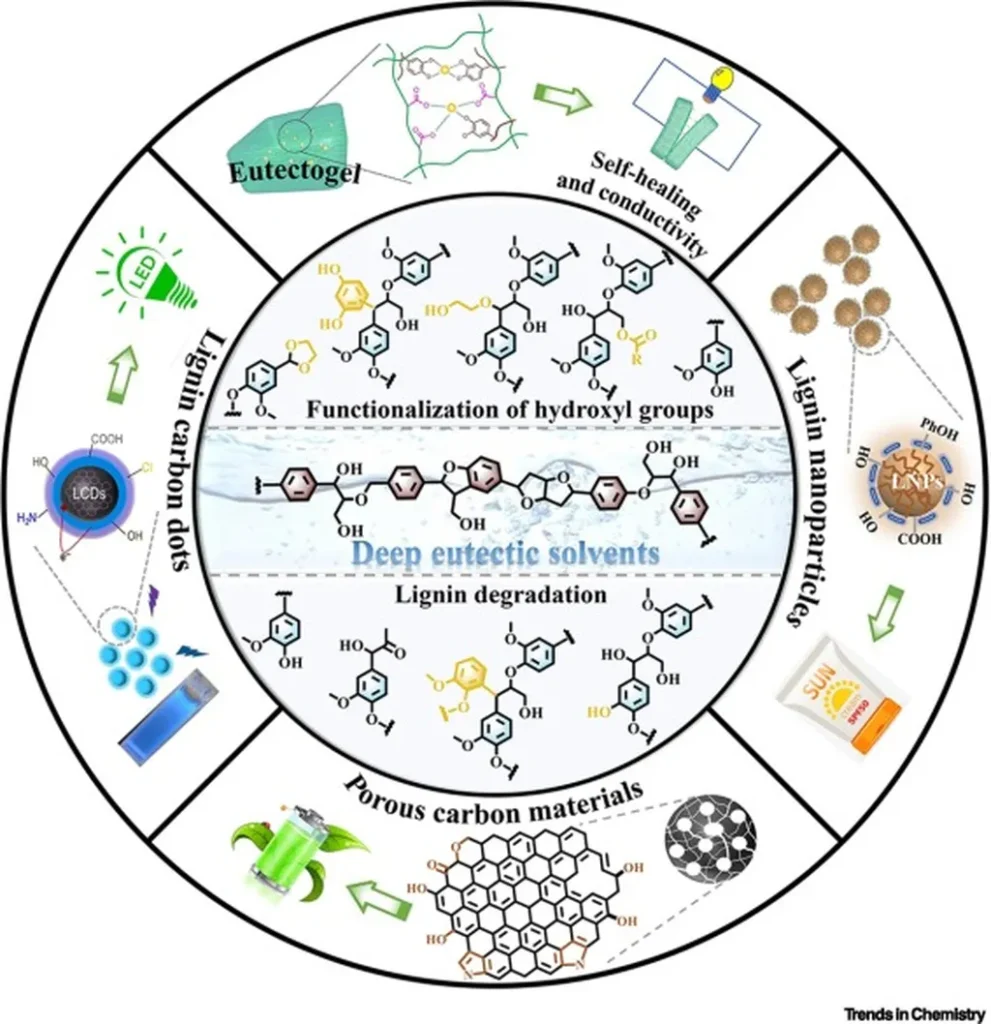In the quest for sustainable and versatile materials for electronic devices, a team of researchers led by Rosarita D’Orsi from the Department of Chemistry and Industrial Chemistry at the University of Pisa has made a significant stride. Their work, published in the Journal of Physics Materials (which translates to “Materials Physics Journal”), explores the tunable electrical properties of lignin, a by-product of the pulp and paper industry and biomass processing. This research could open new avenues for waste-to-application approaches, particularly in the energy sector.
Lignin, known for its rich chemical structure featuring aromatic rings and various functional groups, has long been overlooked as a potential material for electronic applications. However, D’Orsi and her team have uncovered its promising electrical properties. “We found that lignin’s electrical behavior is strongly dependent on its morphology and functional group density,” D’Orsi explains. This discovery could revolutionize how we view and utilize this abundant biomass by-product.
The study focused on three distinct types of lignin: two derived from the Kraft extraction process with different post-treatments (L1 and L2) and one (L3) extracted from Cynara cardunculus using an ethanolic organosolv process catalyzed by aqueous ammonia. Morphological analyses revealed that L3 exhibits features intermediate between the smooth structure of L1 and the fibrillar nanostructure of L2.
When used as the active layer in interdigitated devices, the I-V characteristics of these lignins on a semilogarithmic plot exhibited butterfly-shaped curves, showing strong dependence on temperature and pressure. “L1 and L3 are similar, while L2 differs substantially, reflecting variations in functional group density and morphology,” D’Orsi notes. This variation in electrical conductivity, scaling as L2 > L3 > L1, suggests that ionic conduction plays a significant role in the overall charge transport.
The research highlights the potential of lignin as a versatile and sustainable material for electronic devices. The good fit to the Arrhenius model suggests that charge transport occurs via carrier hopping across localized energy barriers, a mechanism that could be harnessed for various applications. “Morphology-dependent adsorption of air molecules primarily enhances ionic conduction,” D’Orsi adds, indicating that processing methods can tailor lignin’s properties to specific needs.
This study not only sheds light on the diverse electrical properties achievable with lignins from different extraction histories but also underscores the importance of sustainable materials in the energy sector. As the world shifts towards greener technologies, lignin’s tunable electrical properties could pave the way for innovative solutions in sustainable electronics.
The implications of this research are far-reaching. By understanding and manipulating the electrical properties of lignin, researchers can develop more efficient and environmentally friendly electronic devices. This could lead to advancements in areas such as memristors, which are crucial for next-generation computing and data storage technologies. Moreover, the use of lignin as a sustainable material aligns with global efforts to reduce waste and promote circular economies.
In conclusion, D’Orsi’s work represents a significant step forward in the field of sustainable electronics. By exploring the electrical properties of lignin, the research team has opened up new possibilities for waste-to-application approaches, particularly in the energy sector. As the world continues to seek sustainable solutions, lignin’s versatility and tunability make it a promising material for the future.

